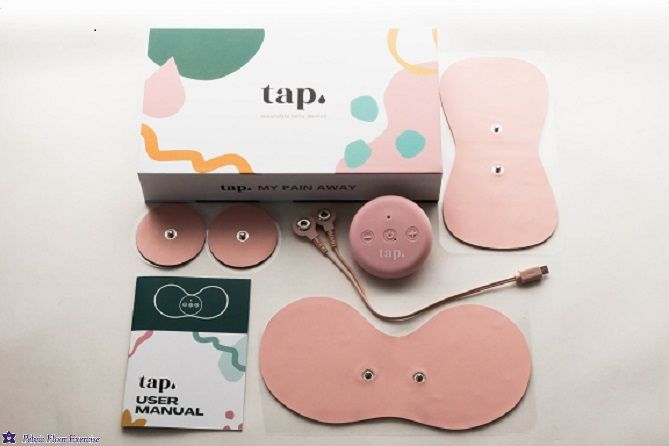tap 2.0
Wearable TENS device for pelvic pain. Pre-set parameters align with current research.
Please note we cannot supply electrical stimulation devices to the US. Any orders will be cancelled and refunded
tap wearable TENS for pelvic pain
tap 2.0 is the new version of this wearable TENS device specifically aimed at use for pelvic pain. TENS has been shown to significantly help pelvic pain.
Conditions that may benefit from using TENS:
- Period pain (also known as dysmenorrhea)
- Endometriosis
- Adenomyosis
- Postnatal pain
- Bladder pain
tap 2.0 has 5 clincially proven modes:
- High Frequency 80-150 Hz ; 50-80 uS (Continuous)
- High Frequency (Burst)
- Low Frequency 1-4 Hz ; 200 uS (Continuous)
- Low Frequency (Burst)
- Bladder Pain and overactive bladder 10 Hz ; 210 uS (Continuous)
You may find different modes work for you at different times so experiment and see what works best for you.
TENS works best if applied WHEN your pain starts and WHERE it starts.
For example if your pain starts in your lower back when your period starts, try using the large electrode pad over your lower back /sacrum. If your pain moves to the front you can move the electrode or use the smaller one/s over the pain at the front. You are in control of where and when you use it.
Do not use:
- If you have a cardiac pacemaker or defibrillator
- If you have an implanted active /electronic device
- In areas of lesions or internal bleeding from injury (use during menstruation is fine – that is what the device is designed for)
- Over swollen, infected, inflamed or broken skin
- Do not use electrodes over head, neck or chest
- Over scars (eg caesarean) until fully healed
- Do not use or wear in water (eg shower/bath)
- Do not use whilst driving or operating machinery
Discontinue use if uncomfortable or you develop any unexpected symptoms, if your skin becomes red or itchy under the electrodes – you may have an allergy to the electrode pad gel
What is in the box:
1 x tap unit
1 x small pad electrode
1 x large pad electrode
1 set of two small round electrodes with lead
1 x USB charging cable
1 x user manual
Hip clip to use with the leaded electrodes can be bought here
How to use (see user manual for full details)
- Clip your tap onto electrode pad of choice (small or large) OR plug electrode lead with small round pads attached into your tap
- Peel backing off electrode/s and attach where you wish to use. Try different placements to work out which works best for you, this may change during your cycle or when you experience pain in different areas.
- Keep the plastic backing as you will need it to store the electrode/s on between uses
- Turn on
- Select mode
- Increase intensity to desired level
- 1 hour use time
- 45minute charge time **To extend the life of your tap 2.0 rechargeable battery do not leave on charge for more than 8 hours
| Specifications | 1 hour run time 45 minute charge time * To extend the life of your tap 2.0 rechargeable battery do not leave on charge for more than 8 hours 5 modes :
Intensity (mA) in increments 1-20 Electrode pads should last for 3 months. Replacements can be purchased on our electrode page |
|---|
1 hour run time
45 minute charge time * To extend the life of your tap 2.0 rechargeable battery do not leave on charge for more than 8 hours
5 modes :
- high frequency continuous
- high frequency burst
- low frequency continuous
- low frequency burst
- bladder pain continuous - these are also the parameters for treating OAB (overactive bladder)
Intensity (mA) in increments 1-20
Electrode pads should last for 3 months. Replacements can be purchased on our electrode page




